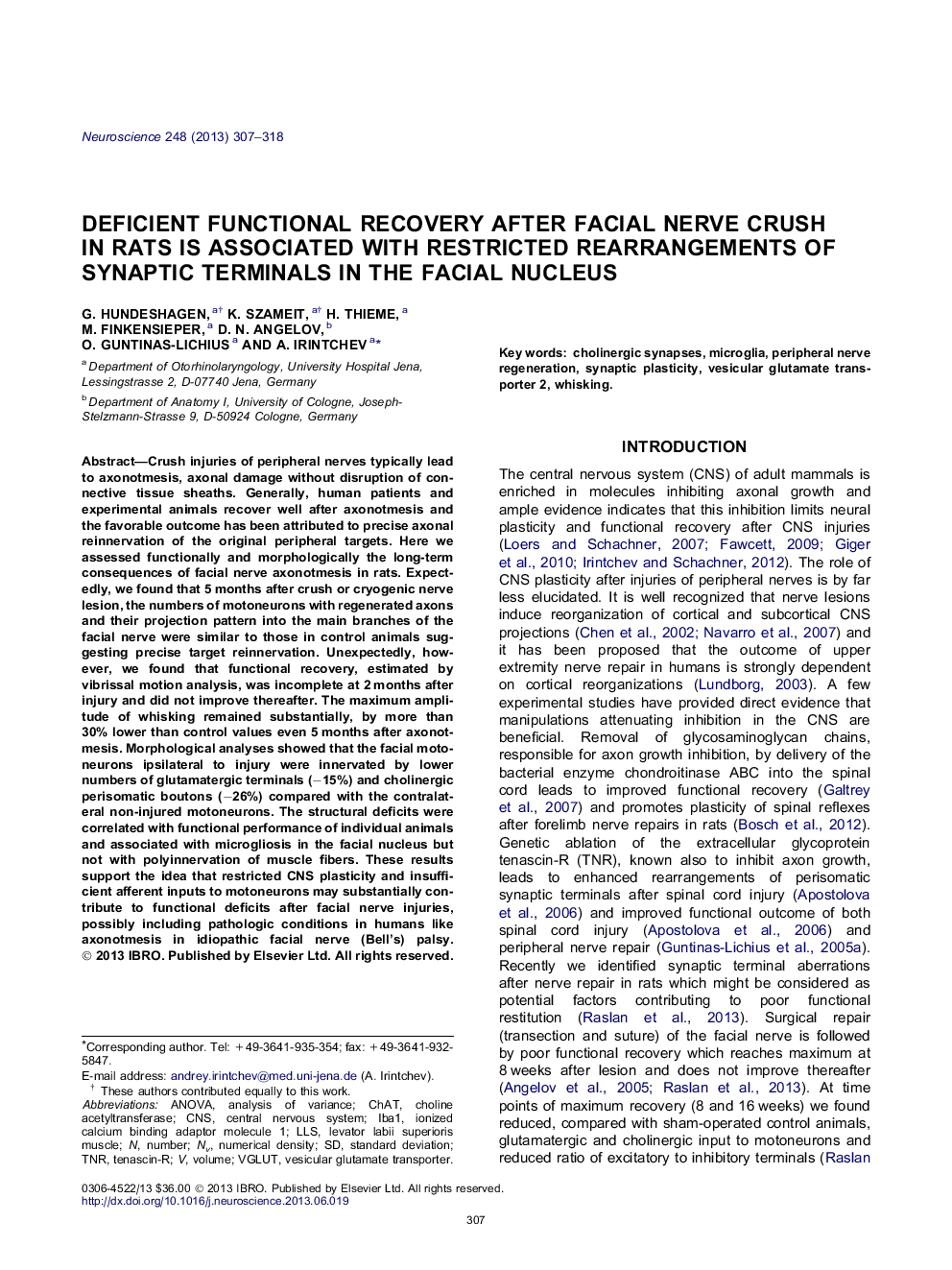| Article ID | Journal | Published Year | Pages | File Type |
|---|---|---|---|---|
| 6274771 | Neuroscience | 2013 | 12 Pages |
Abstract
Crush injuries of peripheral nerves typically lead to axonotmesis, axonal damage without disruption of connective tissue sheaths. Generally, human patients and experimental animals recover well after axonotmesis and the favorable outcome has been attributed to precise axonal reinnervation of the original peripheral targets. Here we assessed functionally and morphologically the long-term consequences of facial nerve axonotmesis in rats. Expectedly, we found that 5Â months after crush or cryogenic nerve lesion, the numbers of motoneurons with regenerated axons and their projection pattern into the main branches of the facial nerve were similar to those in control animals suggesting precise target reinnervation. Unexpectedly, however, we found that functional recovery, estimated by vibrissal motion analysis, was incomplete at 2Â months after injury and did not improve thereafter. The maximum amplitude of whisking remained substantially, by more than 30% lower than control values even 5Â months after axonotmesis. Morphological analyses showed that the facial motoneurons ipsilateral to injury were innervated by lower numbers of glutamatergic terminals (â15%) and cholinergic perisomatic boutons (â26%) compared with the contralateral non-injured motoneurons. The structural deficits were correlated with functional performance of individual animals and associated with microgliosis in the facial nucleus but not with polyinnervation of muscle fibers. These results support the idea that restricted CNS plasticity and insufficient afferent inputs to motoneurons may substantially contribute to functional deficits after facial nerve injuries, possibly including pathologic conditions in humans like axonotmesis in idiopathic facial nerve (Bell's) palsy.
Keywords
Tenascin-RTNRVGLUTIBA1LLSstandard deviationPeripheral nerve regenerationanalysis of varianceANOVAVolumevesicular glutamate transportervesicular glutamate transporter 2CNScentral nervous systemCholinergic synapsesNumberionized calcium binding adaptor molecule 1MicrogliaWhiskingSynaptic plasticityChATnumerical densitycholine acetyltransferase
Related Topics
Life Sciences
Neuroscience
Neuroscience (General)
Authors
G. Hundeshagen, K. Szameit, H. Thieme, M. Finkensieper, D.N. Angelov, O. Guntinas-Lichius, A. Irintchev,
